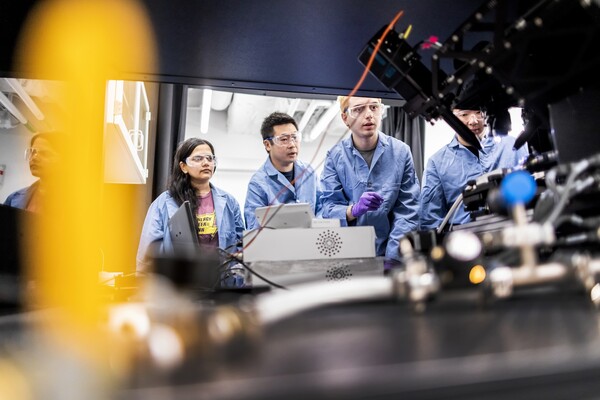
Image: Mininyx Doodle via Getty Images
When University sophomore Albert Xiao joined the first class of the Vagelos Integrated Program in Energy Research (VIPER), a dual-degree program in Penn Arts & Sciences and the School of Engineering and Applied Science, he had already interned at Lawrence Berkeley National Labs and Caltech. Energy issues were at the forefront of his mind.
He was not alone in that respect; the VIPER program was generated in response to overwhelming interest in energy issues on the part of incoming students.
“If you ask our incoming students, ‘What are your goals?’ they often say they want to have a positive impact on the world, and in many cases, they’ll specify that the impact they’d like to have is to help solve the energy challenges that face society, in America, and around the globe,” says VIPER’s Faculty Co-Director Andrew Rappe, a professor of chemistry in Penn Arts & Sciences. “This is a chief concern in the minds of young people, and they have, in many cases, taken action before getting to college, whether it is joining a research lab or doing outreach activities in their communities. We at Penn are responding to that groundswell of interest to make a difference.”
Through the program, Xiao and his classmates will receive dual bachelor’s degrees in their science and engineering disciplines, and will publish at least once in a major journal, made possible through access to the faculty and labs of Pennergy, Penn’s energy research center.
Xiao, a Berkeley, Calif. native, is majoring in chemistry and materials science and engineering, and his research involves improving solar cells by way of the nanocrystals known as “quantum dots.” Made of semiconducting materials small enough to experience quantum effects, their light-emitting capabilities make them an intriguing tool for potentially boosting the efficiency of photovoltaic devices.
Working in the lab of Christopher Murray, a Penn Integrates Knowledge professor whose appointment also spans the gap between Penn Arts & Sciences and Penn Engineering, Xiao investigated electron transfer rates within solar cells with different sized quantum dots. His research helped show that both the size of the dots and the chemistry that connects them influence the amount of energy they can transfer—which could enable scientists and engineers to better optimize quantum dot size to maximize the efficiency of solar cells.
This kind of student research is a top priority for VIPER’s leadership, which along with Rappe, includes Faculty Co-Director John Vohs, a professor of chemical and biomolecular engineering in the School of Engineering and Applied Science, and Managing Director Kristen Hughes. The program’s benefactors, Roy and Diana Vagelos, also take an active interest in the research the students produce, coming back to Penn regularly to hear updates on their progress.
Starting with 10 students in the inaugural class, VIPER intends to double in size within the next few years. Beyond the state-of-the-art lab equipment and combined faculty expertise of Pennergy, the VIPER vision of integrating knowledge lies in its students.
“Our students are a true cohort,” says Rappe. “Although they’re some of the most talented and motivated students at Penn, they don’t have a competitive relationship; they collaborate and support each other, and it really provides the right environment in which to achieve excellence.”
Evan Lerner

Image: Mininyx Doodle via Getty Images

The sun shades on the Vagelos Institute for Energy Science and Technology.
nocred

Image: Pencho Chukov via Getty Images

nocred